Do you love fresh floral arrangements, but end up with a smelly, wilted mess after a few days?
In my house, it’s kind of like the shoemaker’s kids having no shoes. Occasionally, I get behind in my watering… and that’s not good for a floral designer and garden writer.
My houseplants bounce back, but cut flowers? Never! They need daily care, which is why I’ve put together the following tips.
The next time you receive a beautiful bouquet or arrangement, try to diligently use the following tips.
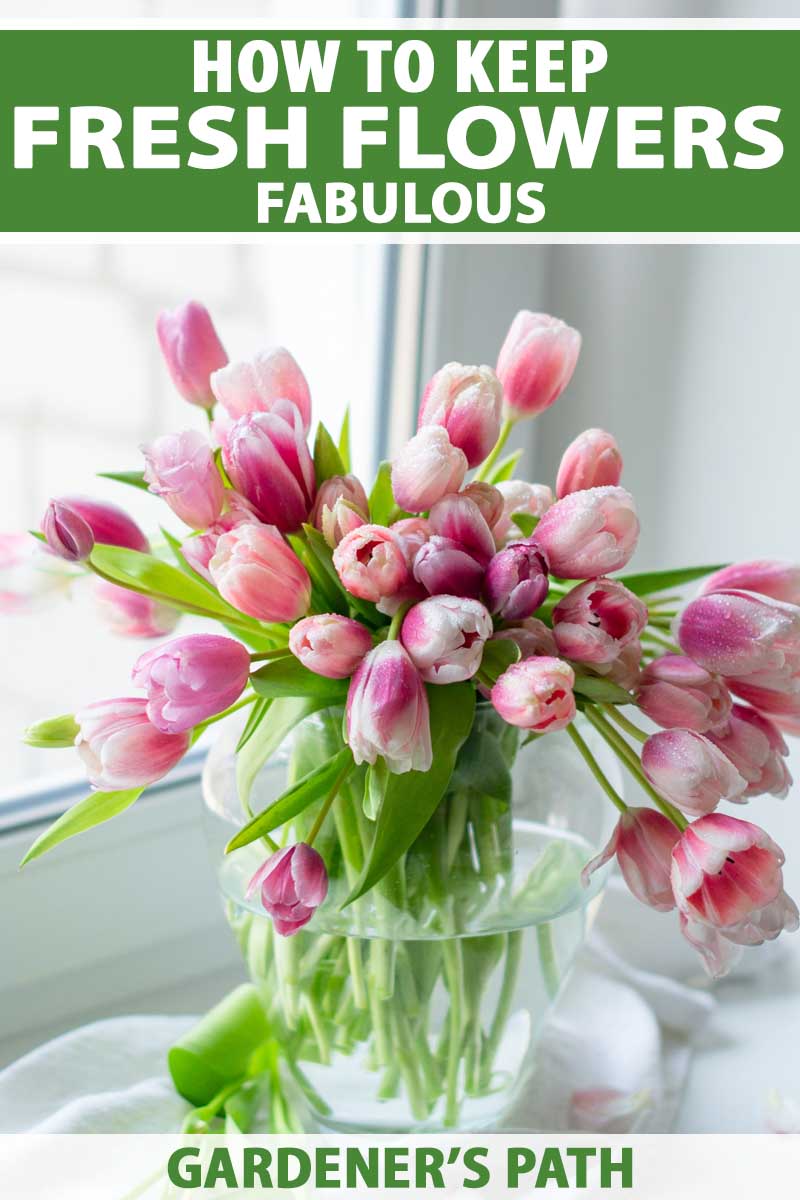
We link to vendors to help you find relevant products. If you buy from one of our links, we may earn a commission.
When tended with care, vases sparkle, smell sweet, and remain first-day fresh for a good five days. And, best of all, only you know the subtle changes they have undergone to keep them that way!
Here they are:
1. Hydration is Essential
While this seems obvious, I’m ashamed to have to admit that I’ve had a vase or two dry up from neglect. If you just don’t have time for the whole regimen, at least top up your arrangements before you head out for the day.
And, keep two things in mind when you buy fresh bunches to bring home:
- Pick them up after you finish the rest of your shopping, to minimize their time out of water. Give them a shake, and reject those that drop petals.
- Bring pruners, and a bucket with about four inches of water in the bottom, along with you in the car. Hold the flower stems under water, and snip 1/2 inch off each, on a 45° angle. Throw the cuttings away, place your flowers in the bucket, and bring them home.
2. Clean Stems Equal Clean Water
No matter what size, color, or type of arrangement you have, keeping the liquid that they’re going to be living in clean is a must.

Good florists trim the bottom leaves off stems, so that they do not end up beneath the surface of the water, where they would decay, discolor the clear liquid. and smell. Be sure to do the same if you fill a vase with a market bouquet or an arrangement of foliage from your garden.
3. Mind the Temperature
For the most part, a cut floral arrangement thrives best in a cool location in your home. So, keep your lovelies away from direct sunlight, heating sources, and the stove.
Did you know that some plants are phototropic?
This means that they turn their heads to follow the sun.
Tulips are a great example. And what’s even more amazing is that tulips continue to grow after they’ve been cut. They twist and stretch with minds of their own!
To counteract their wanderlust, rotate their container every day.
The exception to the overarching rule to keep it cool is blossoms that have not yet opened.
When I have roses or lilies with tight buds, I place them in a warm location until they open, and then transfer them to a cool one. If they are in a mixed arrangement, I put them in their own vase in a warm place until they start to open, then return them to their original container.
Next, 4 and 5 go together. Trimming and changing the water are crucial for hydration and inhibiting bacteria that accelerate decay.
4. Trim Daily
Cut foliage holds up well when the stems get a fresh cut every day.
For vase arrangements, simply lift out the entire bouquet, and hold the stem ends under running tap water. Using a sharp pair of pruners, snip off 1/2 inch from the bottom of each stem. Hold your shears at a 45° angle to maximize the surface area for the stem to draw liquid.
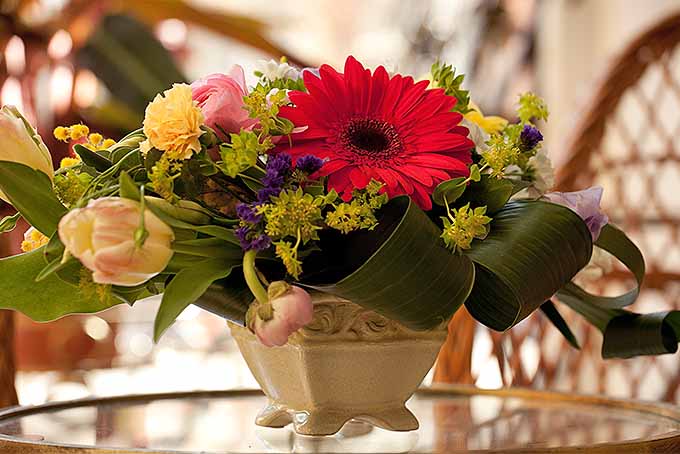
Intricate container arrangements in florist’s foam are best left intact. You may be able to refresh simpler ones by carefully removing individual stems, trimming as above, and gently pushing each stem back into the foam brick.
5. Change H2O Completely Every Day
Vases should be rinsed with mild detergent and water, taking care to wipe away any residue that may harbor bacteria.
If you have a packet of flower food, pour it into the vase and add enough tap water to dissolve it. Return your trimmed bouquet to the clean vase. Add water to a height just beneath the first leaves.
For a container with florist’s foam, carefully tip it to pour out the old water. If the inside is accessible, wipe around it with a moist paper towel. Use a watering can to dissolve a packet of flower food in tap water, and add this to the container until the florist’s foam is thoroughly saturated.

Chrysal Flower Food, 100 Packets
Do you decorate your house with flowers from the garden, or pick up the occasional bouquet from the farmers market? If your source doesn’t provide them (or if you need more!), packets of Chrysal flower food are available on Amazon.
Though the contents of these packets seem to be somewhat of an industry secret, they typically contain a combination of citric acid, sucrose, and powdered bleach.
6. Deadhead and Remove Decaying Material
Different varieties of cut foliage age at different rates. Watch for signs of deterioration, and address them during your daily trim and water change.
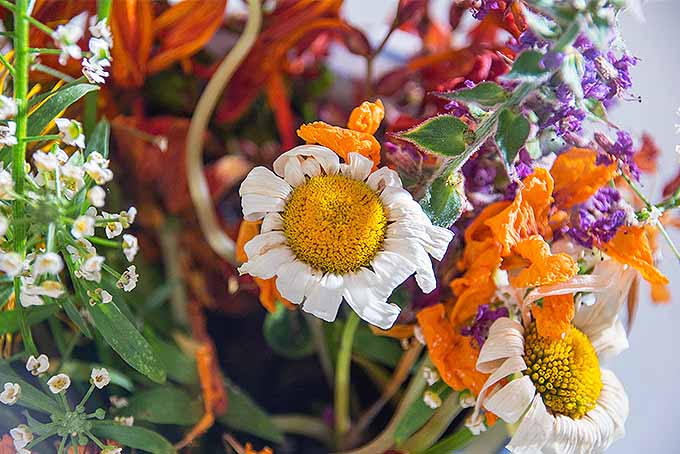
Deadhead blossoms that are dropping petals, and snip off leaves that are turning yellow or withering. Carefully pinch off floppy outer rose petals to reveal tighter inner folds.
If the majority of a bouquet is ready to be tossed, entire stems may be removed from a vase arrangement, and the healthy remainder transferred to a smaller vessel.
For containers with florist’s foam, the removal of entire stems may leave large gaps. Replace these with new material, like the oh-so-versatile evergreens we often take for granted in our yards. Give their stems a 45° angle cut under running tap water before insertion.
7. Spritz Container-less Foliage
Cumbersome floral and foliage pieces that are not in vases or containers also need some moisture to remain attractive. I often use a water-filled spritz bottle to moisten holiday evergreen swags, wreaths, garlands, and orchid garnishes.

Crowning Glory Flower Spray, 32 Fl. Oz.
There’s a commercial product you may find useful called Crowning Glory, and it’s available on Amazon. It not only hydrates, but retards decay. However, it is not to be used on floral material that will be placed on or near food.
Fabulous Flowers for Every Day
Try these seven tips the next time you bring a gorgeous bunch of blossoms into your home, and you can feel good about making them last.

I love when the doorbell rings, two hands hold out a stunning arrangement, and I ask, “For me?” I know you do, too.
Why not make fresh flowers a regular part of your indoor decor? It’s a gorgeous option that’s fun to explore whether you’re decorating for a holiday, or looking to add a touch of color to the dinner table.
An inexpensive way to do this is by growing them yourself. If you’re interested, check out our article, “Grow Your Own Cut Flower Garden,” for tips on getting started.
Do you have any additional tips to share? Tell us in the comments section below.
Product photos via Chrysal Flower Food and Floralife. Uncredited photos: Shutterstock.
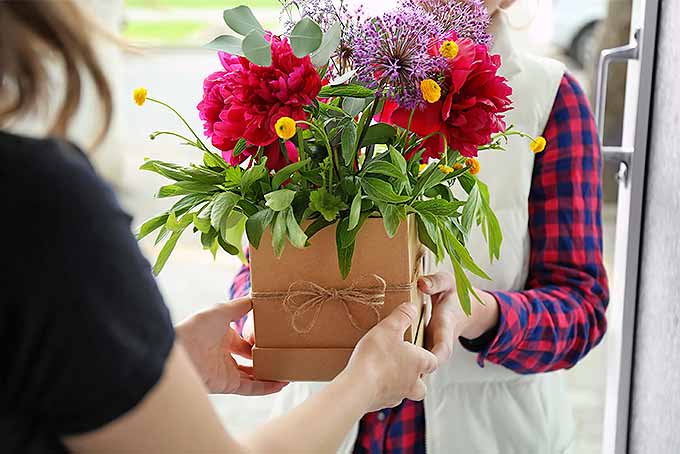
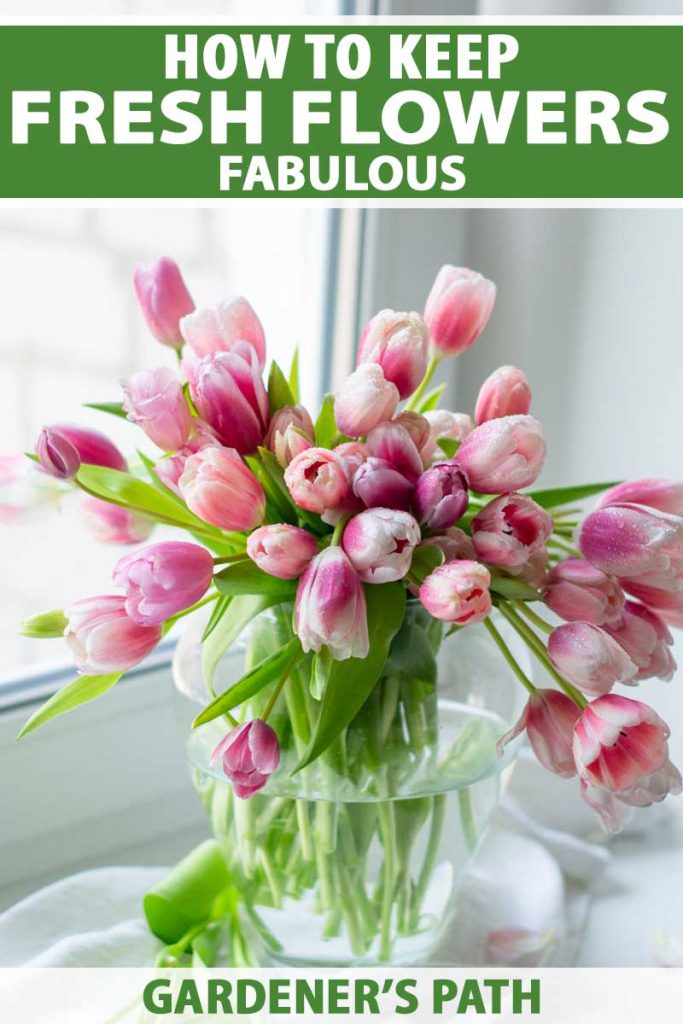


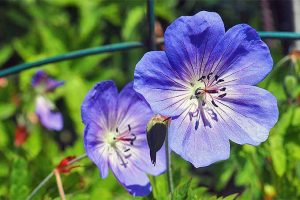
I have black fingers. Wish I had green fingers. This article is amazing. I might not change the water ever day, but will definitely change it more often and cut the stems at the same time. Never too old to learn, I am 52. Big thanks.
Thanks for the tips!
Thank you for good advice.
This article is amazing, I really like the info you have shared here.